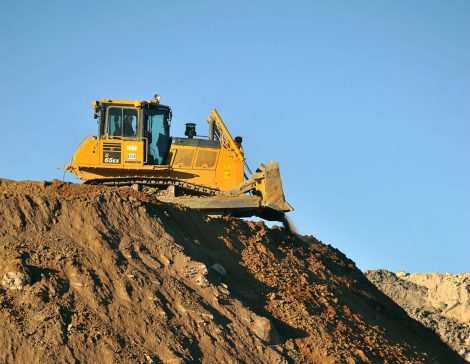Gone are the days when construction equipment started with a plume of smoke. However, digging, shaping and development require the use of machinery, bulldozers, tractors, tracked excavators and articulated dumpers on our sites, all of which are sources of GHG emissions and pollution.
How can decarbonization and the reduction of these emissions be integrated into the reality of a construction activity, with obvious budgetary constraints, and given the state of technological advancements in both machinery and fuels? Our assessment is clear: while investment in machines has proven its energy efficiency, the search for alternative fuels currently has too many constraints. How can we overcome these constraints to meet ambitious commitments that are rooted in our operational reality ?
I would like to share a conviction here: investing and committing to this approach is ecologically fundamental and in the medium term, it is already economically viable.
1. Using the technological evolution of combustion engines to reduce GHG emissions
The gradual tightening of anti-pollution standards for vehicles has led to major technological advancements in internal combustion engines. In fact, in the last ten years, there has been no less than three changes in the regulations regarding the emission levels of nitrogen oxides (NOx) and particles. These standards are imposed on new vehicles. We have therefore invested heavily in the renewal of our vehicles. Between 2014 and 2021, the average age of our fleet of 80 machines has been reduced from more than four years to less than two and a half.
2. Reducing fuel consumption: the successful bet on hybrid machines.
As early as 2014, we took the gamble on hybrid machines, successively acquiring a Caterpillar D7E bulldozer equipped with diesel/electric hybrid technology, and then in 2017 a Komatsu HB365 tracked excavator equipped with an exclusive system for recovering energy from the rotation of the turret. These technologies have reduced our fuel consumption by 10% to 20%. Today, we have two additional hybrid machines of the Caterpillar D6 XE type. The savings generated are more than 15,000L of fuel per year, which is the equivalent of 40 tons of CO2 less each year.
3. Favoring alternative fuels over diesel: emerging solutions
Since 2019, some of our fleet of vehicles have been using GTL (Gas-to-Liquids), a synthetic fuel that generates much less NOx or particles during combustion. This is an undeniable progress alongside the technical evolution of engines, particularly for underground use. But the cost remains high.
Since 2021, a contract for the supply of Oleo100, a sustainable alternative fuel based on French rapeseed, with an extremely favorable carbon footprint (more than 50% CO2 savings « from field to wheel ») has enabled us to save more than 35 tons of CO2 emissions over one year. However, homologation constraints restrict a wider use of this fuel.
To combine the best of both worlds, we plan to experiment in a short term with the use of HVO100 fuel, a production method similar to that of GTL and which uses recycled biosourced raw materials. This implies a very favorable overall CO2 balance, as well as a strong reduction of emissions during combustion, but there are still questions about the price of this fuel.
4. Coupling electric motors and hydrogen production: an immature sector
In 2020, ECT started thinking about developing a fleet of electric trucks powered by fuel cells, and the associated hydrogen production infrastructure. A partnership with Gaussin and Bouygues Energies & Services aimed to have the first trucks in operation by 2022.
The lack of incentive in the regulatory context, operational difficulties and the lack of growth in the hydrogen sector have prevented us from reaching this objective. We remain convinced that this remains a solution for the future and are working to structure the sector.
5. Combining people and technology: efficient and sustainable optimization
The implementation of good practices in the use of construction equipment is fundamental. Substantial savings in fuel consumption are possible on a daily basis. The use and consolidation of telematics and geolocation information embedded in the machines by an external monitoring tool – Fleet Management « HIBOO », constitutes a source of optimization in 3 points: Ensuring the suitability of the machine and the work to be done, which generates real fuel savings. Improving the idling rate of the machines, as idling means wasted fuel. Finally, promote good driving behavior. Driver awareness and training is a short-term lever, regardless of the type of machine and fuel.
6. Networking of sites: bringing excavation sites closer to recovery sites
Soil transport by truck represents 80% of the sector’s overall emissions. The location of ECT sites, due to their proximity to the excavation sites, makes it possible to save 67% of GHG emissions, or 22,000 TeqCo2. Our next objective is to be a prescriber of evolutions on heavy vehicles and on fuels for our clients in the construction industry for the transport of soil. In this way, the entire profession will have the means to participate in this collective effort to make our activities greener.
In conclusion
The question is: should we be happy with the current context which encourages us to systematically move towards an evolution? Are we heading towards a disruptive and beneficial crisis? Reducing consumption, thus minimizing GHG emissions, and capitalizing on responsible driving and use of vehicles have a favorable financial impact for companies. Will the combination of economic and ecological issues give new impetus to technological innovation? It is possible, by relying on a collective action so that the whole sector fully deploys its environmental interests.


